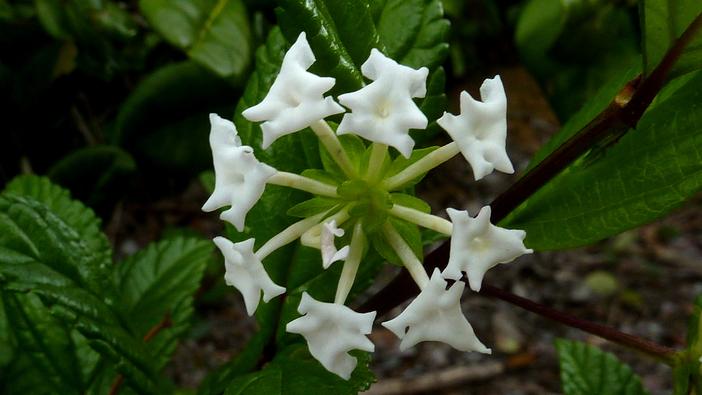Rough Lantana
(Lantana radula)
Rough Lantana (Lantana radula)
/
/

Alex Popovkin
CC BY 2.0
Image By:
Alex Popovkin
Recorded By:
Copyright:
CC BY 2.0
Copyright Notice:
Photo by: Alex Popovkin | License Type: CC BY 2.0 | License URL: https://creativecommons.org/licenses/by/2.0 | Uploader: Uleli | Publisher: Wikipedia Commons












Estimated Native Range
Summary
Lantana radula, commonly known as Rough Lantana or Yellow Sage, is a perennial shrub native to Central and South America, thriving in a variety of habitats including tropical forests, disturbed areas, and along roadsides. It typically grows to a height of 2-3 feet (0.6-0.9 meters) and a width of 3-4 feet (0.9-1.2 meters). Rough Lantana is characterized by its textured leaves and clusters of vibrant yellow flowers that bloom profusely in the summer and spring, attracting butterflies and other pollinators.
Rough Lantana is valued for its drought tolerance, low maintenance requirements, and the long-lasting color it adds to gardens. It is commonly used in urban landscapes, as border plantings, and in butterfly gardens. It thrives in full sun and adapts to a range of soil types, including clay, loam, and sandy soils, provided they have medium to fast drainage. While it requires medium amounts of water, it is quite resilient once established. However, gardeners should be cautious as Lantana radula can become invasive outside its native range, and it is important to consult local regulations before planting. Additionally, all parts of the plant are toxic if ingested, and it can cause skin irritation in some individuals.CC BY-SA 4.0
Rough Lantana is valued for its drought tolerance, low maintenance requirements, and the long-lasting color it adds to gardens. It is commonly used in urban landscapes, as border plantings, and in butterfly gardens. It thrives in full sun and adapts to a range of soil types, including clay, loam, and sandy soils, provided they have medium to fast drainage. While it requires medium amounts of water, it is quite resilient once established. However, gardeners should be cautious as Lantana radula can become invasive outside its native range, and it is important to consult local regulations before planting. Additionally, all parts of the plant are toxic if ingested, and it can cause skin irritation in some individuals.CC BY-SA 4.0
Plant Description
- Plant Type: Shrub
- Height: 2-3 feet
- Width: 3-4 feet
- Growth Rate: Rapid
- Flower Color: Yellow
- Flowering Season: Summer, Spring
- Leaf Retention: Evergreen
Growth Requirements
- Sun: Full Sun
- Water: Medium
- Drainage: Medium, Fast
Common Uses
Border Plant, Butterfly Garden, Groundcover, Low Maintenance, Potted Plant, Showy Flowers
Natural Habitat
Native to Central and South America, including tropical forests, disturbed areas, and along roadsides
Other Names
Common Names: Wild Sage, Yellow Sage
Scientific Names: , Lantana radula, Camara radula, Lantana radula subsp. glabrescens, Lantana rugosa, Lantana rugosa,
GBIF Accepted Name: